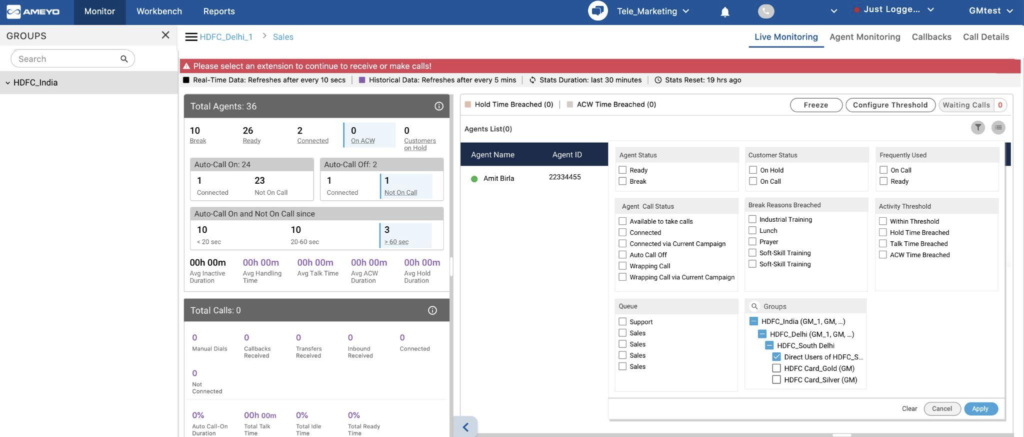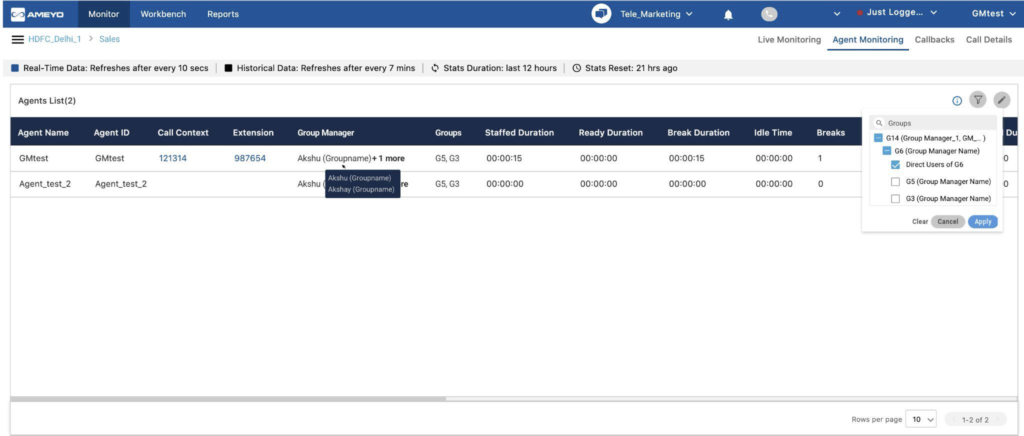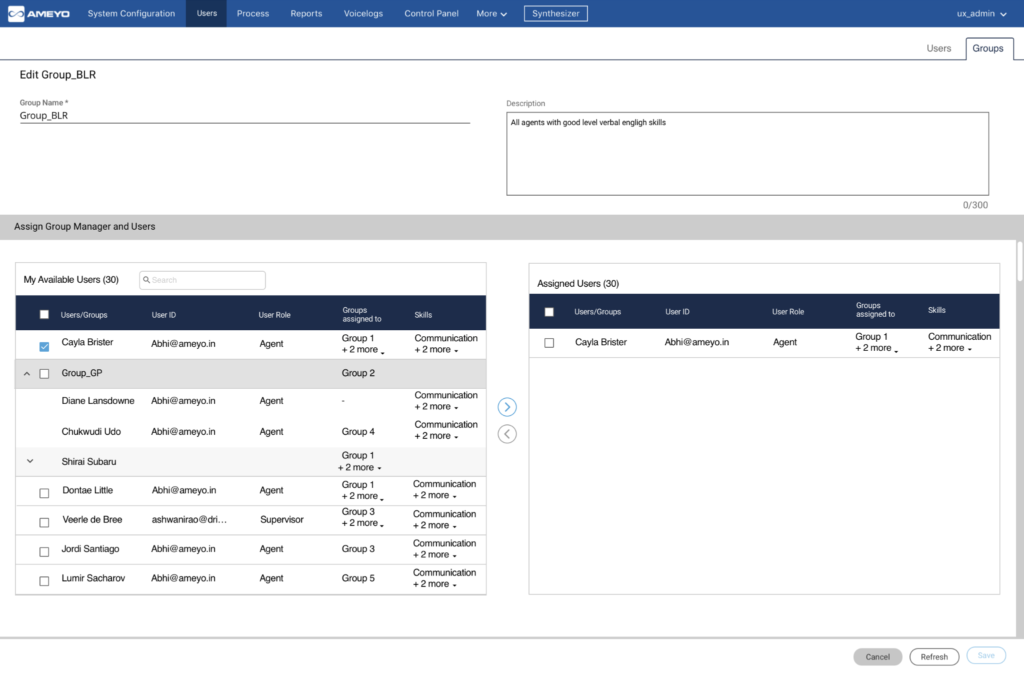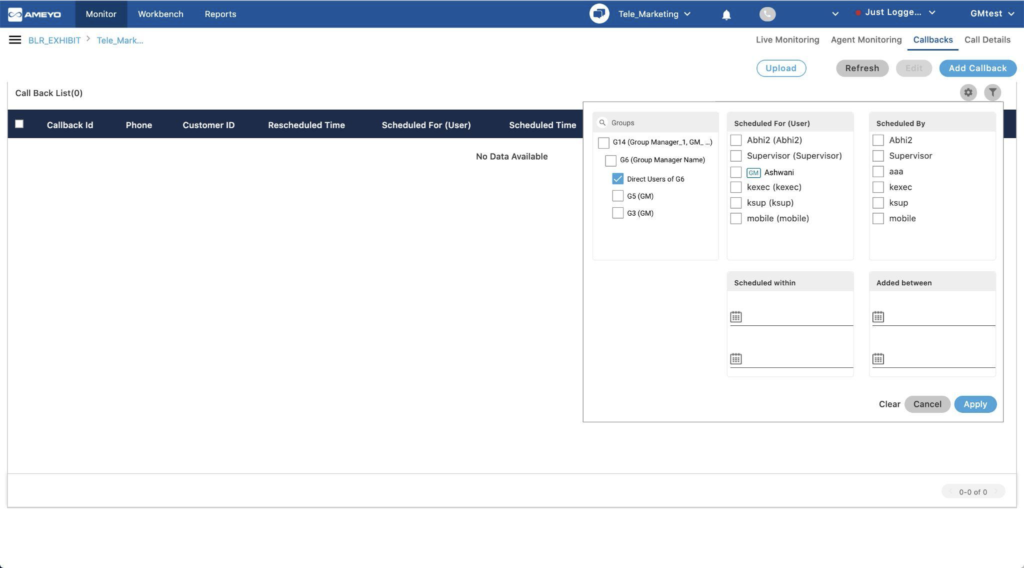In organizations that have a few employees, there might not be a lot of layers to supervise, but in large organizations, with thousands of employees, it becomes extremely important to have clear visibility of employees’ tasks at all hierarchical levels.
To better understand this, assume a company of 5000 agents that are assigned to a supervisor. It is extremely difficult for the supervisor to monitor these many agents, which further results in making him a bottleneck in the decision-making process.
So for large organizations with complex business hierarchies, Ameyo has introduced a user role of Group Manager. This user role can be used by team leaders to monitor associates, managers can use the group manager capability to monitor team leads, and area heads can monitor managers using the Supervisor capability.
Group Manager Role for Improved Monitoring

- Distributes supervisor’s work
- Allows easy monitoring of all agents
- More focus on the team’s performance and improving agent’s productivity
- Group Managers can easily barge, snoop and whisper
- Provides access to callback and call details
- Detail visibility of all the agents such as break time, on-call time, etc

Group Hierarchy CRUD
As we know, the Group Manager feature allows Group Manager to supervise all the agents under him, but there was no one to supervise the Group Manager. As a result of it, the Group Hierarchy CRUD has been introduced. This allows keeping a check on the performance of Group Managers under a particular Group Manager.

The following activities can be done:
Create – While creating a Group, the administrator can assign and unassign Groups and other Users to the Group. A notification is sent to the Users about the same.
Read – Once the Group is created, it is listed in the My Available Users and Groups list.
Update / Edit – The Administrator can edit the Groups. While editing a Group, the administrator can perform all the actions just like creating.
Delete – The administrator can delete the groups as well by clicking on the delete icon on the Group stab.
Group Hierarchy Callback

On the Callbacks tab, Group Manager can view callbacks and schedule or add callbacks for the following users:
- Direct users of his Group
- Users of child groups
- Group managers of the child groups
Group Hierarchy for Call Details
The call details can be filtered on the basis of the groups and group manager.
The group manager can do the following tasks:
- listen to the voice logs
- score the call records
- download the Voicelogs,
- apply filters and search on the users of the child group.
For each user on the list, group and immediate group manager’s details are listed. In case a user is assigned to multiple groups, then all the groups and respective group managers are listed.

With this new feature enhancement, businesses can easily solve the challenges of poor agent performance, improper monitoring of leads, and lack of clarity around their work. Group hierarchy allows managers at any level to monitor and supervise all the levels below him/her which brings overall transparency to the organization.
Apart from its primary benefit of monitoring and quality, the enhancement also allows organizations to streamline their processes better. This is one of the many capabilities that Ameyo’s full-stack customer engagement platform provides. There are many similar features that will help you make better decisions, resulting in business growth.
To know more, connect with our experts!

